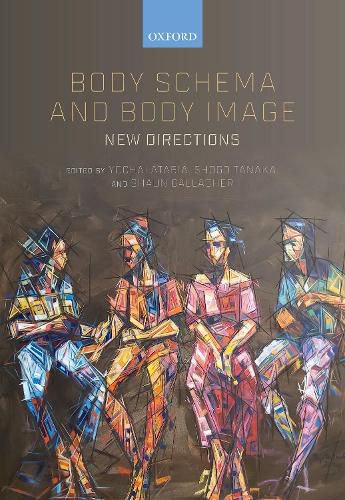Readings Newsletter
Become a Readings Member to make your shopping experience even easier.
Sign in or sign up for free!
You’re not far away from qualifying for FREE standard shipping within Australia
You’ve qualified for FREE standard shipping within Australia
The cart is loading…






Body schema is a system of sensory-motor capacities that function without awareness or the necessity of perceptual monitoring. Body image consists of a system of perceptions, attitudes, and beliefs pertaining to one’s own body. In 2005 Shaun Gallagher published an influential book entitled How the Body Shapes the Mind (OUP). That book not only defined both body schema and body image, but explored the complicated relationship between the two. It also established the idea that there is a double dissociation, whereby body schema and body image refer to two different but closely related systems. Given that many kinds of pathological cases can be described in terms of body schema and body image (phantom limbs, asomatognosia, apraxia, schizophrenia, anorexia, depersonalization, and body dysmorphic disorder, among others), we might expect to find a growing consensus about these concepts and the relevant neural activities connected to these systems. Instead, an examination of the scientific literature reveals continued ambiguity and disagreement.
This volume brings together leading experts from the fields of philosophy, neuroscience, psychology, and psychiatry in a lively and productive dialogue. It explores fundamental questions about the relationship between body schema and body image, and addresses ongoing debates about the role of the brain and the role of social and cultural factors in our understanding of embodiment.
$9.00 standard shipping within Australia
FREE standard shipping within Australia for orders over $100.00
Express & International shipping calculated at checkout
Body schema is a system of sensory-motor capacities that function without awareness or the necessity of perceptual monitoring. Body image consists of a system of perceptions, attitudes, and beliefs pertaining to one’s own body. In 2005 Shaun Gallagher published an influential book entitled How the Body Shapes the Mind (OUP). That book not only defined both body schema and body image, but explored the complicated relationship between the two. It also established the idea that there is a double dissociation, whereby body schema and body image refer to two different but closely related systems. Given that many kinds of pathological cases can be described in terms of body schema and body image (phantom limbs, asomatognosia, apraxia, schizophrenia, anorexia, depersonalization, and body dysmorphic disorder, among others), we might expect to find a growing consensus about these concepts and the relevant neural activities connected to these systems. Instead, an examination of the scientific literature reveals continued ambiguity and disagreement.
This volume brings together leading experts from the fields of philosophy, neuroscience, psychology, and psychiatry in a lively and productive dialogue. It explores fundamental questions about the relationship between body schema and body image, and addresses ongoing debates about the role of the brain and the role of social and cultural factors in our understanding of embodiment.